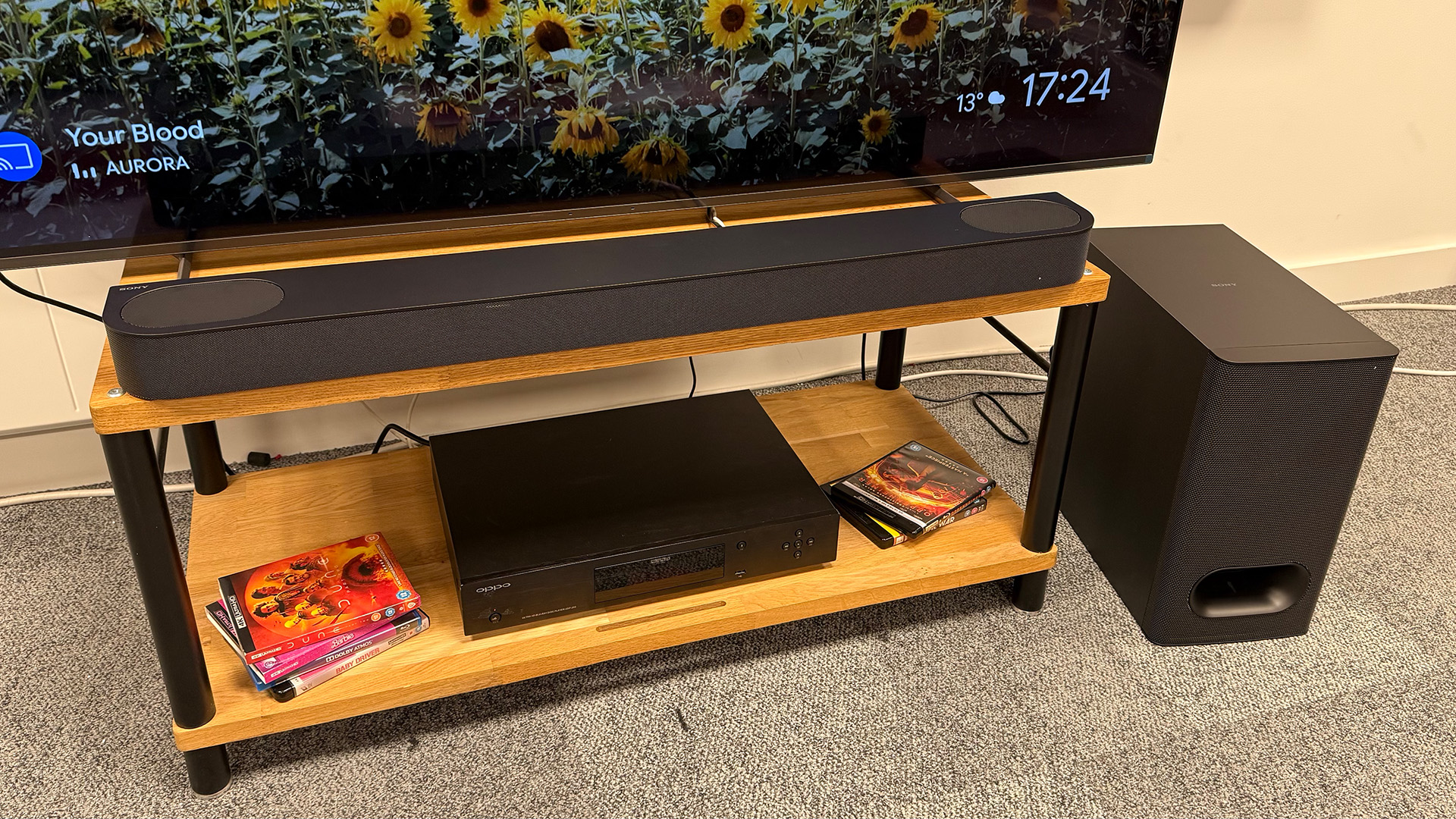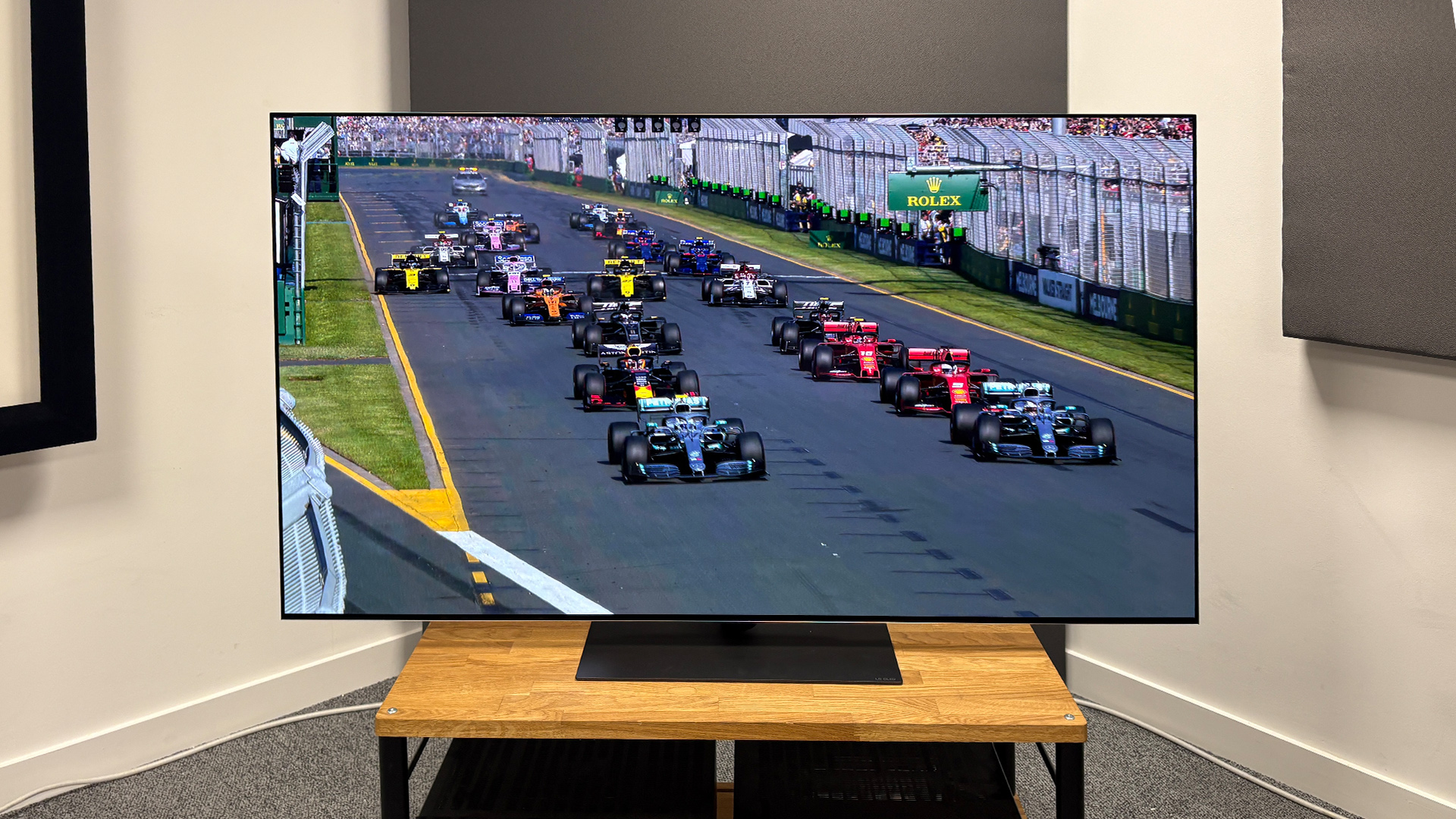What Hi-Fi? Verdict
It’s not the last word in subtlety, balance or detail, but if it’s bassy bombast and room-filling sound right up to the ceiling that you’re after, the Bar 6 will suit you well
Pros
- +
Weighty, room-filling sound
- +
Very impressive height effects
- +
A lot of kit for the money
Cons
- -
Sub and ’bar don’t integrate very well
- -
Occasionally synthetic, flat voices
- -
Lacks the detail and subtlety of the best
Why you can trust What Hi-Fi?
There are two basic ways a company can go when designing a mid-range soundbar.
It can go minimalist, cramming everything into a compact single unit that provides advanced features such as Dolby Atmos through clever processing. The Sonos Beam Gen 2 is the most obvious and successful example of this approach.
Or, it can go the other way, and go big on the hardware side with several, large components. That is the way Sony has gone with the Sony Bravia Theatre Bar 6, aka the Theater Bar 6, aka the HT-B600.
Not only does the Theatre Bar 6 dwarf rivals such as the Beam, it comes with a rather large, dedicated subwoofer. On pure scale terms, it makes the Beam look like a bit of a rip-off. But, as we’ll see, more isn’t always better when it comes to soundbars.
Price
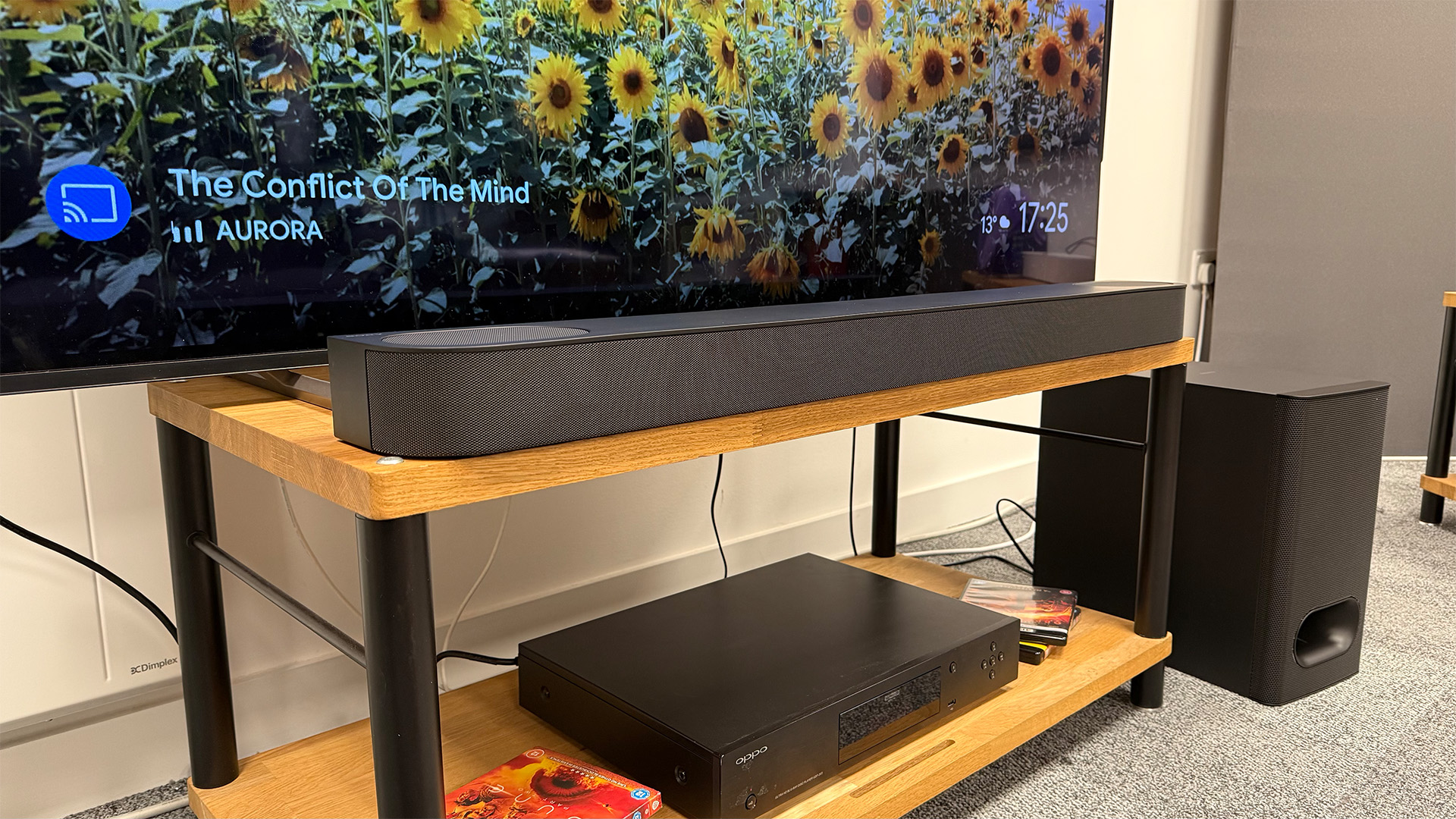
Priced at £499 / $650 / AU$899, the Sony Bravia Theatre Bar 6 looks in pictures and on paper to be a lot of kit for the money.
Its key rival is, of course, the Sonos Beam Gen 2, which is officially priced at £449 / $499 / AU$799 but is often available for less.
As mentioned, they’re physically quite different propositions, but someone looking at one should probably also consider the other – though, as we’ll get to, the sonic approach each one takes is quite different.
The latest hi-fi, home cinema and tech news, reviews, buying advice and deals, direct to your inbox.
Design
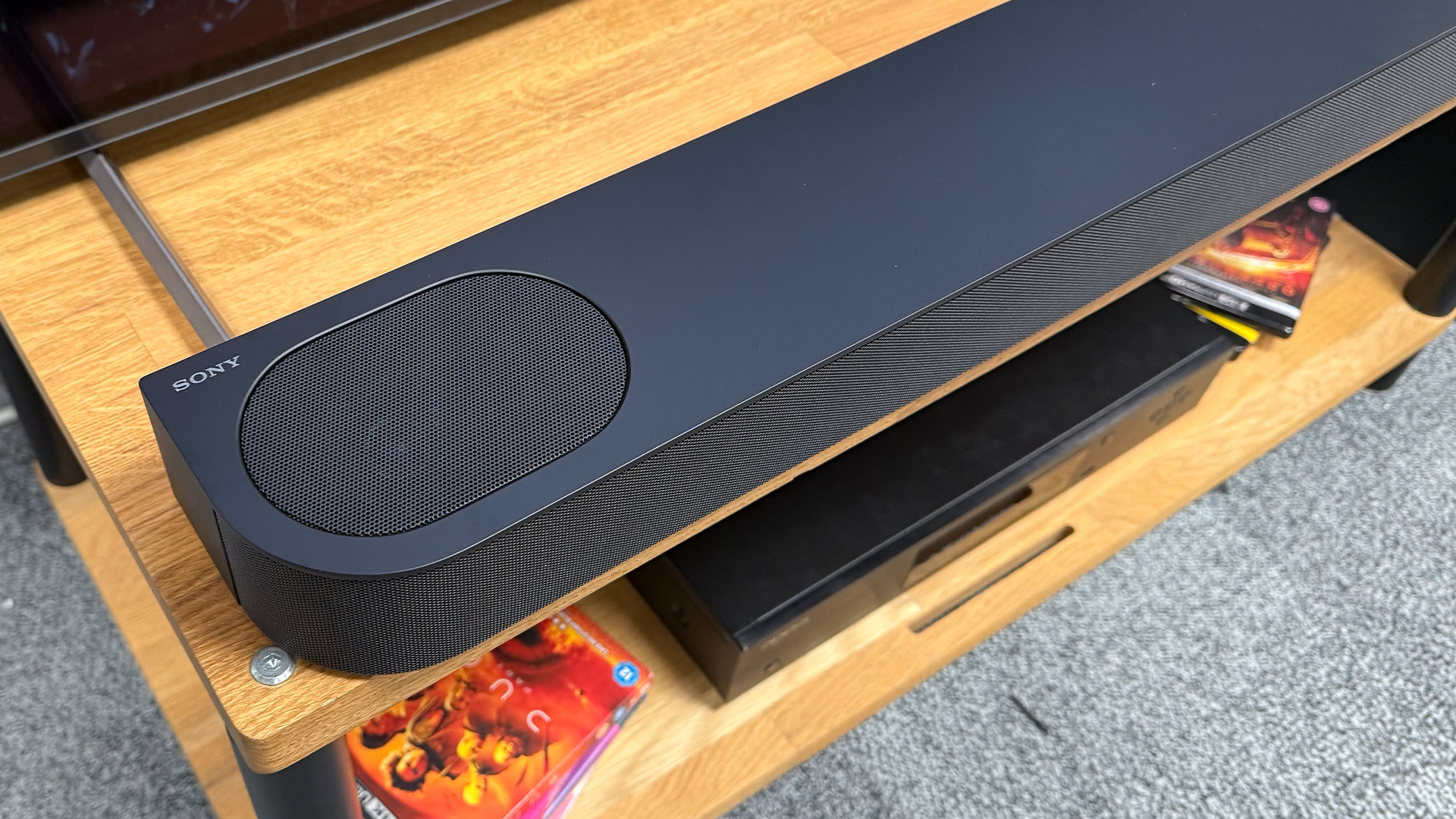
As already mentioned twice now, the Sony Bravia Theatre Bar 6 is a substantial piece of kit.
The main ‘bar is 95cm wide and 11cm deep, which means it’s considerably larger than the 65cm-wide Sonos Beam.
The Sony is quite a handsome piece of kit, though, and the height of just 6.4cm means the soundbar will sit in front of most TVs without blocking the lower part of the screen.
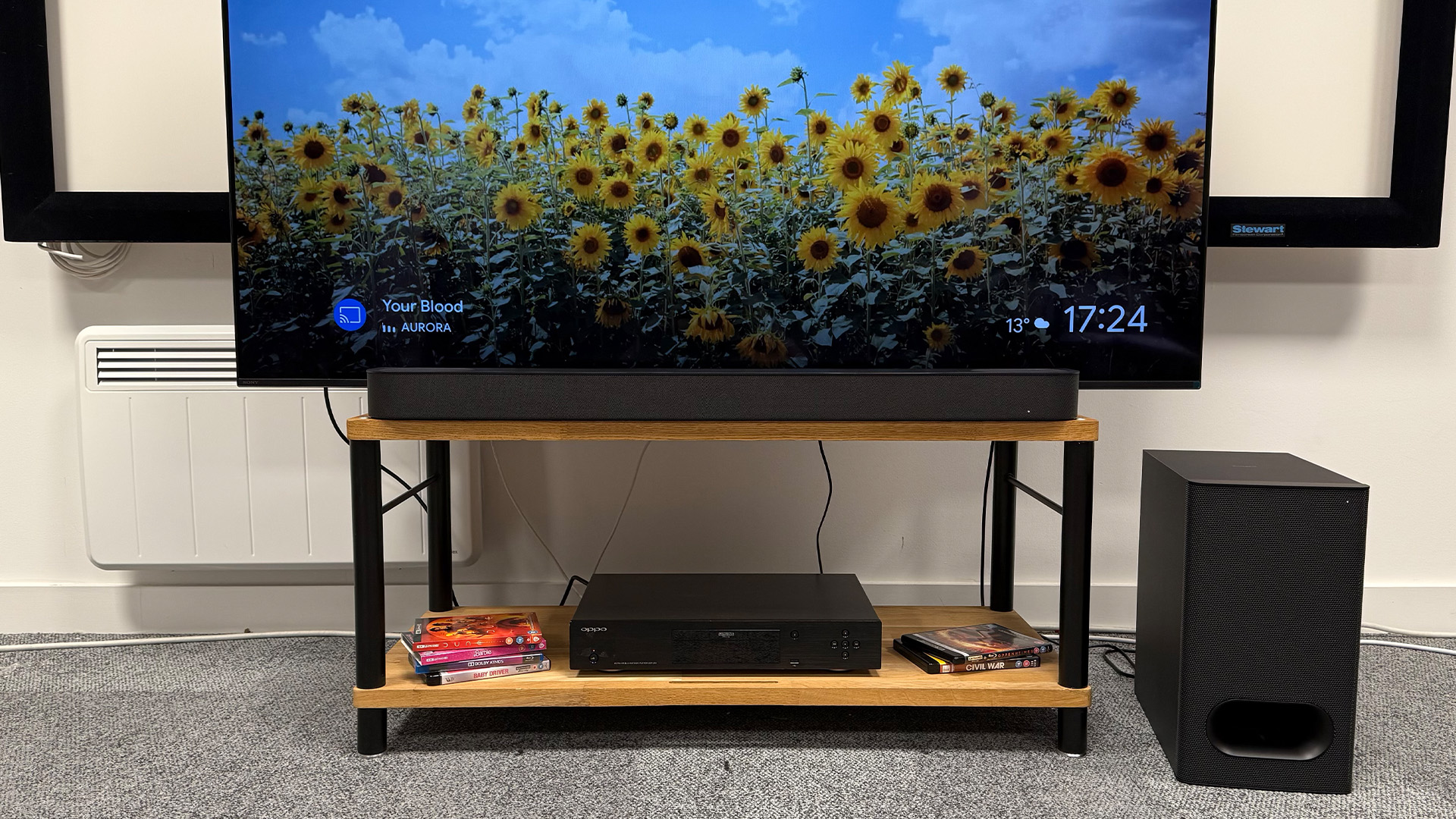
Connectivity HDMI eARC, Optical, Bluetooth
Format support Dolby Atmos, DTS:X
Streaming? No
Voice control? No
Dimensions (hwd) 6.4 x 95 x 11cm (soundbar) / 39 x 39 x 21cm (subwoofer)
Weight 3.1kg (soundbar) / 7.7kg (subwoofer)
Should your TV’s stand prove awkward for placement of the Bar 6, you can attach the two included feet, which create a gap between the tabletop and the bottom of the soundbar. This gap is only about 1.5cm, but that should provide enough clearance for most set-ups.
There’s no display on the front of the Bar 6, which can be a little frustrating for those who like to be able to quickly check things such as the current sound format being received and the audio preset that is selected.
But this is rather par for the course these days and, unlike many rivals, Sony at least provides an excellent app that provides all of this info (plus much more, which we’ll get to).
Also included in the hefty, ‘p’-shaped box is a wireless subwoofer. This is weightier and less budget-looking than the subwoofers that are usually included in relatively affordable soundbar systems, but it is still a large black box at the end of the day, which might not be to everyone’s liking.
Of course, you’re not obliged to position the subwoofer next to the soundbar at the front of the room, but that is where these things tend to sound their best, and that is what we find in our testing space.
Features
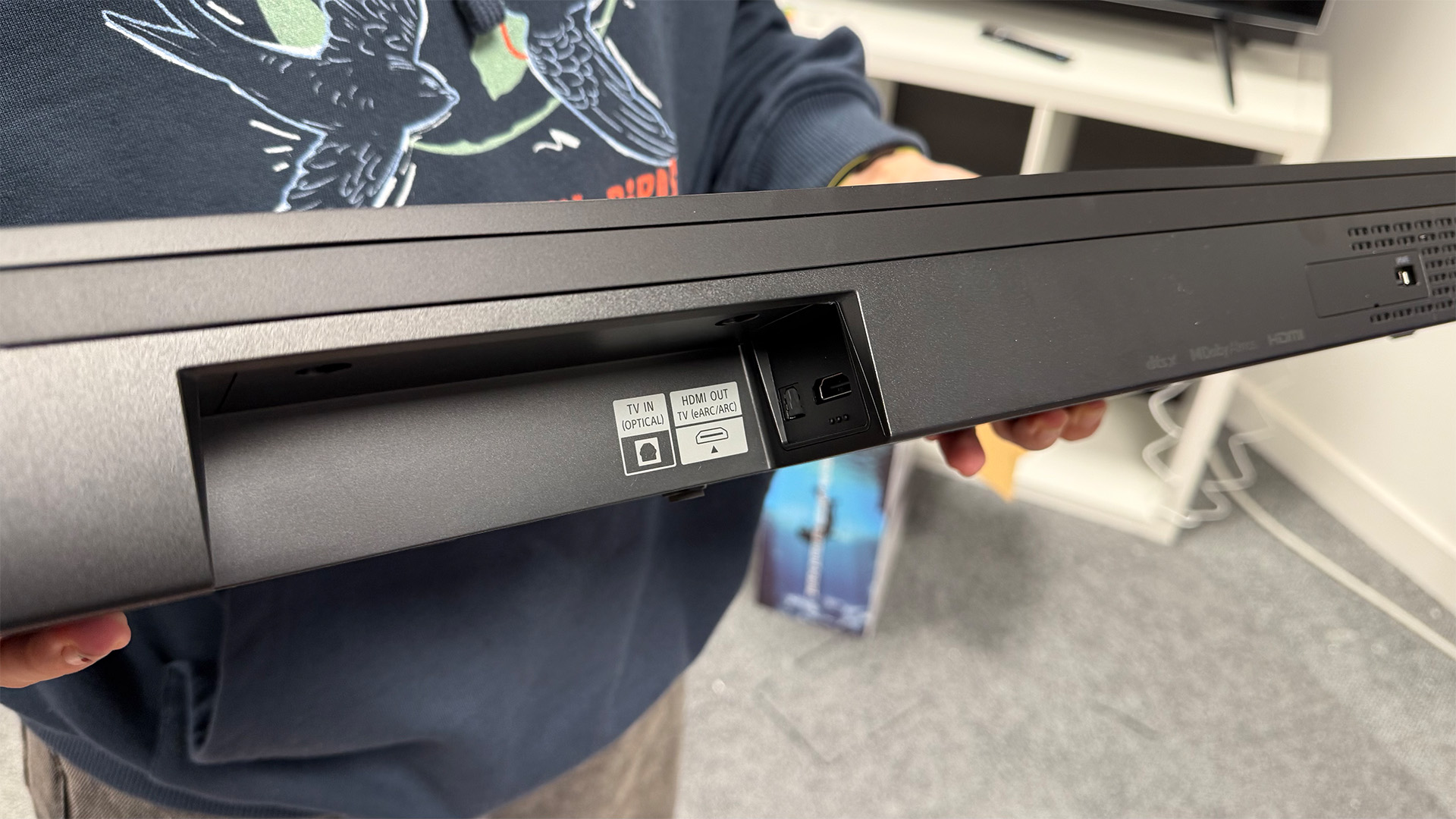
The Sony Bravia Theatre Bar 6 is a 3.1.2-channel system, once the subwoofer is accounted for. That means there are three forward-firing channels and two up-firers built into the main soundbar.
Up-firing drivers certainly aren’t unheard of at this level, but they are something that the market-leading Beam Gen 2 does not have.
These up-firing drivers should in theory allow the Bar 6 to produce more convincing Dolby Atmos and DTS:X effects – particularly those that are supposed to fill the area above your head.
All five of the drivers in the soundbar are of Sony’s X-Balanced design. These have an oval shape that Sony says reproduces a fuller range of frequencies than standard circular drivers while reducing distortion. X-Balanced speakers have been hugely successful in any number of Sony audio devices, but particularly soundbars.
While X-Balanced drivers can usually dig a little deeper than traditional drivers of the same size, it is of course the subwoofer in the package that’s going to do the heavy lifting in the bass department.
The Theatre Bar 6 system as a whole is rated at 350W. While figures such as this always need to be taken with a pinch of salt, 350W of power is monstrous compared with the Sonos Beam’s 200W.
Setting the Bravia Theatre Bar 6 up is a doddle. Plonk the two units wherever you want them, connect your TV to the soundbar (you’ll likely use the HDMI eARC port but optical is also available), power everything up, then open the Bravia Connect app and, once any necessary updates have been applied, you’ll be walked through the rest of the simple set-up process.
That set-up process essentially boils down to telling the app how far your sofa is from the soundbar and subwoofer, and the distance between the ’bar and the ceiling.
There’s none of the auto calibration you get with the Sonos Beam or Sony’s more expensive soundbars, so it’s worth getting a tape measure out and getting these measurements right, as they’re the only factor in the sound tuning of the system.
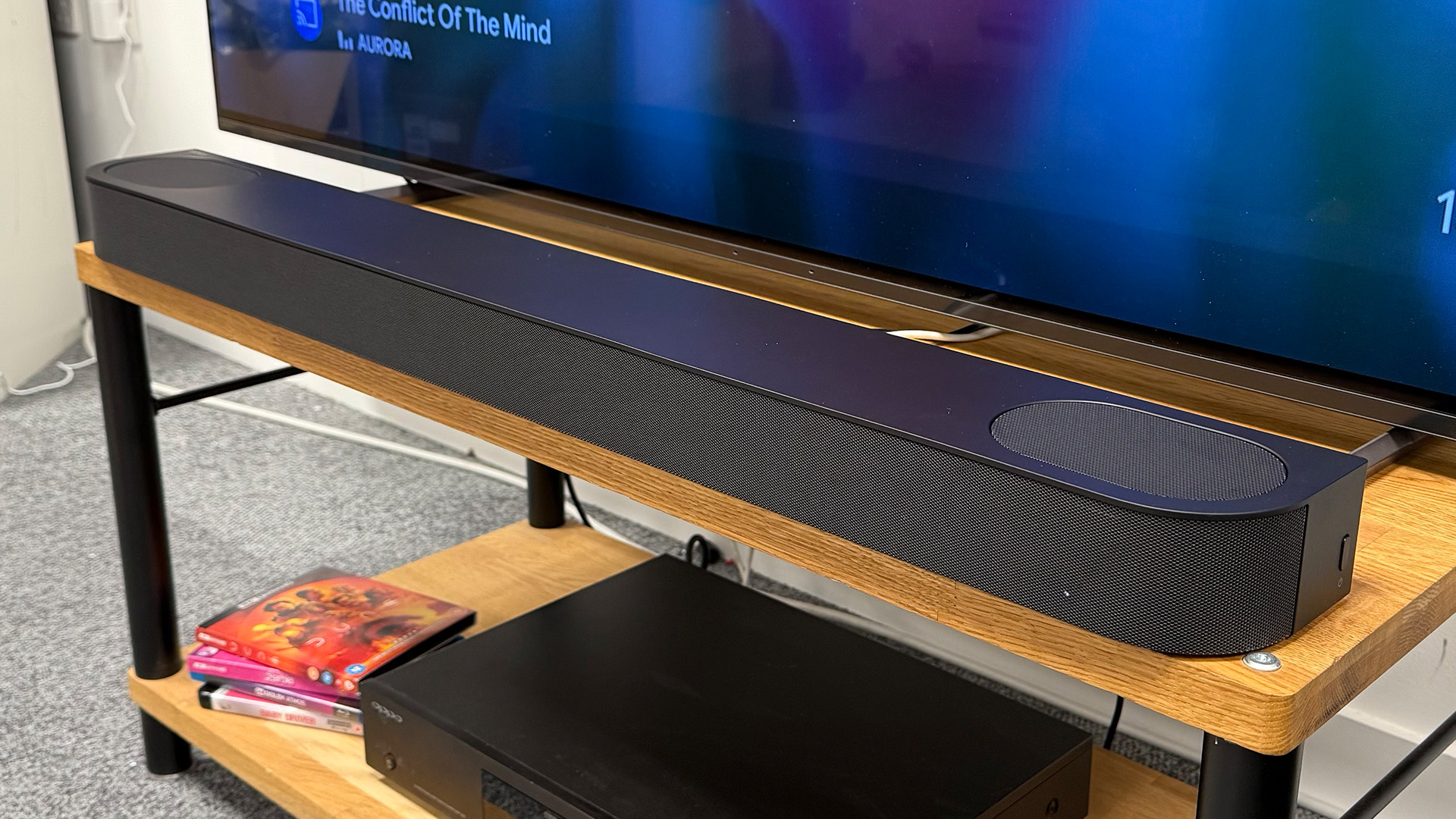
As an aside, while the initial set-up gives you only quite broad ranges to select from when giving the distances between the components, ceiling and seating position, you can input more specific measurements in the advanced settings menu afterwards.
The Bravia Connect app was launched by Sony alongside the Bravia Theatre Bar 9 and Bar 8, and the Bravia Theatre Quad, last year, and it’s all-round very good. Smart graphics, clear instructions and an intuitive layout make it a pleasure to use.
The app is the best way to control the soundbar and see what it’s up to, but there is also a small remote control in the box. This is fairly basic but perfectly functional, with buttons for master volume, bass volume, input, Sound Field, Voice, Night and mute.
Sound Field is the system’s Dolby Atmos processing, which can be switched on or off, Night activates the Night mode, which reduces bass volume and dynamic range to prevent sound travelling through the house so much, and Voice activates the Voice Zoom feature, which attempts to boost dialogue clarity without unduly sacrificing the rest of the sound.
All of those controls can also be found in the app, of course, and in fact the app gives you seven levels of Voice Zoom to choose between, from 0 to Max (the remote simply flicks between 0 and level 3).
In the app, you can also choose between different Sony, Dolby and DTS processing for the sound field, but we find Sony’s, which is enabled by default, to be the best here.
There are also options to enable DSEE and Audio DRC. DSEE (Digital Sound Enhancement Engine) is designed to upscale heavily compressed music, so could prove useful to some users, but Audio DRC compresses dynamic range, so is best avoided (use the Night mode for temporary compression when required instead).
Unlike the other soundbars in this range, the Theatre Bar 6 doesn't support Sony's Acoustic Centre Sync feature, which combines the TV's speakers with the drivers featured in the soundbar.
However, if you do own a recent Sony TV, then you'll be pleased to find that many of the settings will be integrated into the TV’s menus for even easier access, meaning there is at least a smidge of Sony synergy between this soundbar and the company's TV range.
If you’re planning to use your new soundbar for music as well as movies, you might be disappointed to learn that you will have to use Bluetooth to send tunes from your phone to the ’bar. There’s no support for the likes of Spotify Connect or Tidal Connect, and there’s no direct integration of music over wi-fi.
Sound
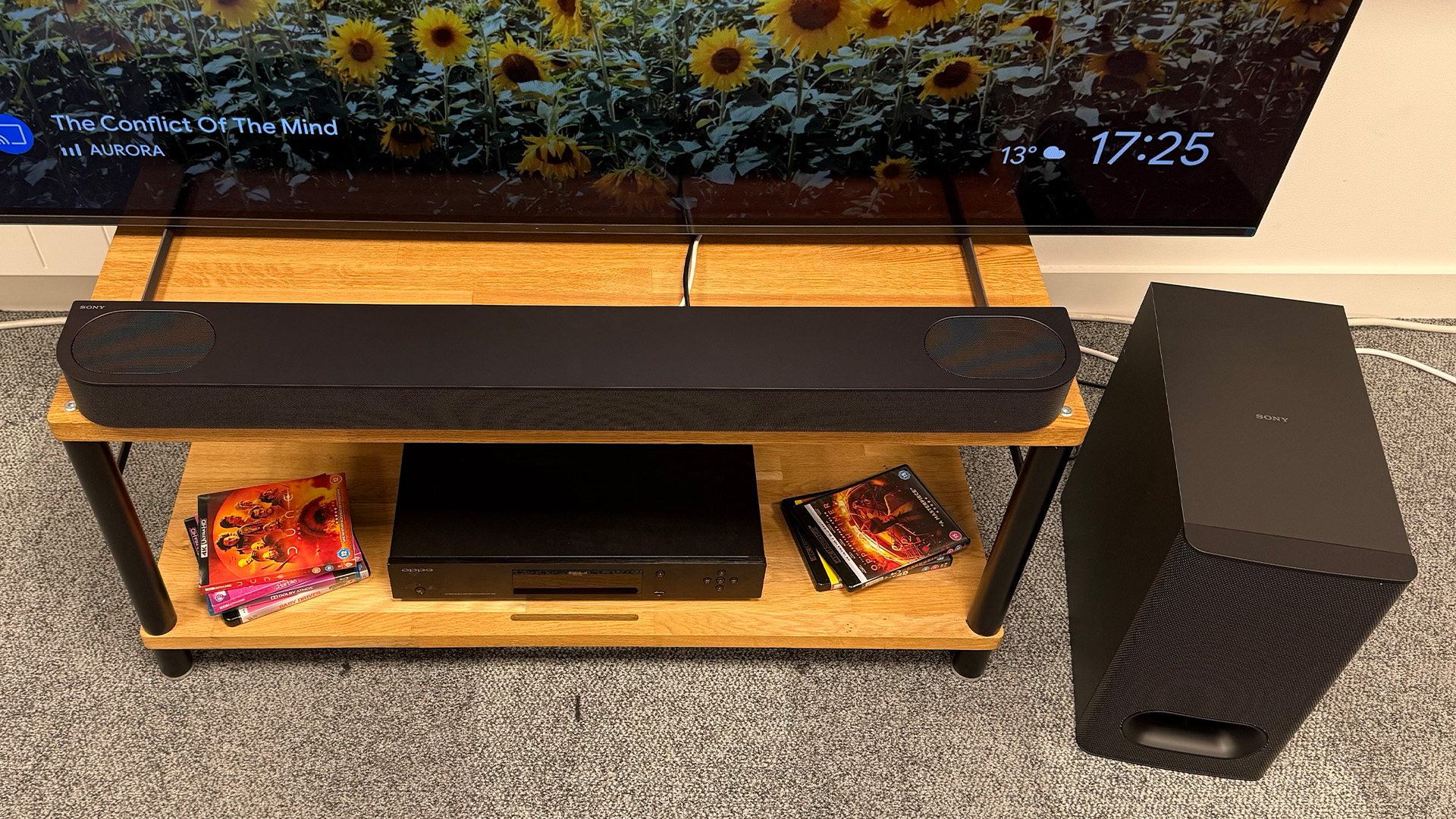
It’s unfortunately not really possible to avoid starting the sound section with a bit of a negative. The 0 setting that the subwoofer is set to by default is just ludicrously high. The bass is so incredibly loud that it almost completely drowns out the midrange and treble.
The subwoofer volume can thankfully be reduced, with 10 steps down (and 10 up) available. The problem is that each step is less granular than such a scale would suggest, with -3 still being a bit overbearing and -4 being hardly there.
After much testing, we establish that the Theatre Bar 6 sounds better overall with too much bass than with too little, so we settle for -3 on the bass volume scale.
Even at our preferred -3 setting, the Bar 6 offers vastly more weight and depth than a sub-less rival such as the Beam. The flak in Unbroken and explosions in the final battle of Civil War have an awesome heft that is very rare at this level.
But when you ask the subwoofer to deliver anything more complicated than a big thump, it becomes a bit unstuck again. It’s just not agile enough to keep up with the main ’bar during fast-paced action scenes or soundtrack moments, such as the start of the second chapter of Blade Runner 2049.
There’s also a bit of a gap in the upper bass and lower midrange region that makes it feel as though the bass just appears as a bit of a lump out of nowhere, rather than a seamless element of the overall presentation.
The only way to fill this gap is by increasing bass volume again so that it starts drowning out some of the midrange, which is no solution at all.
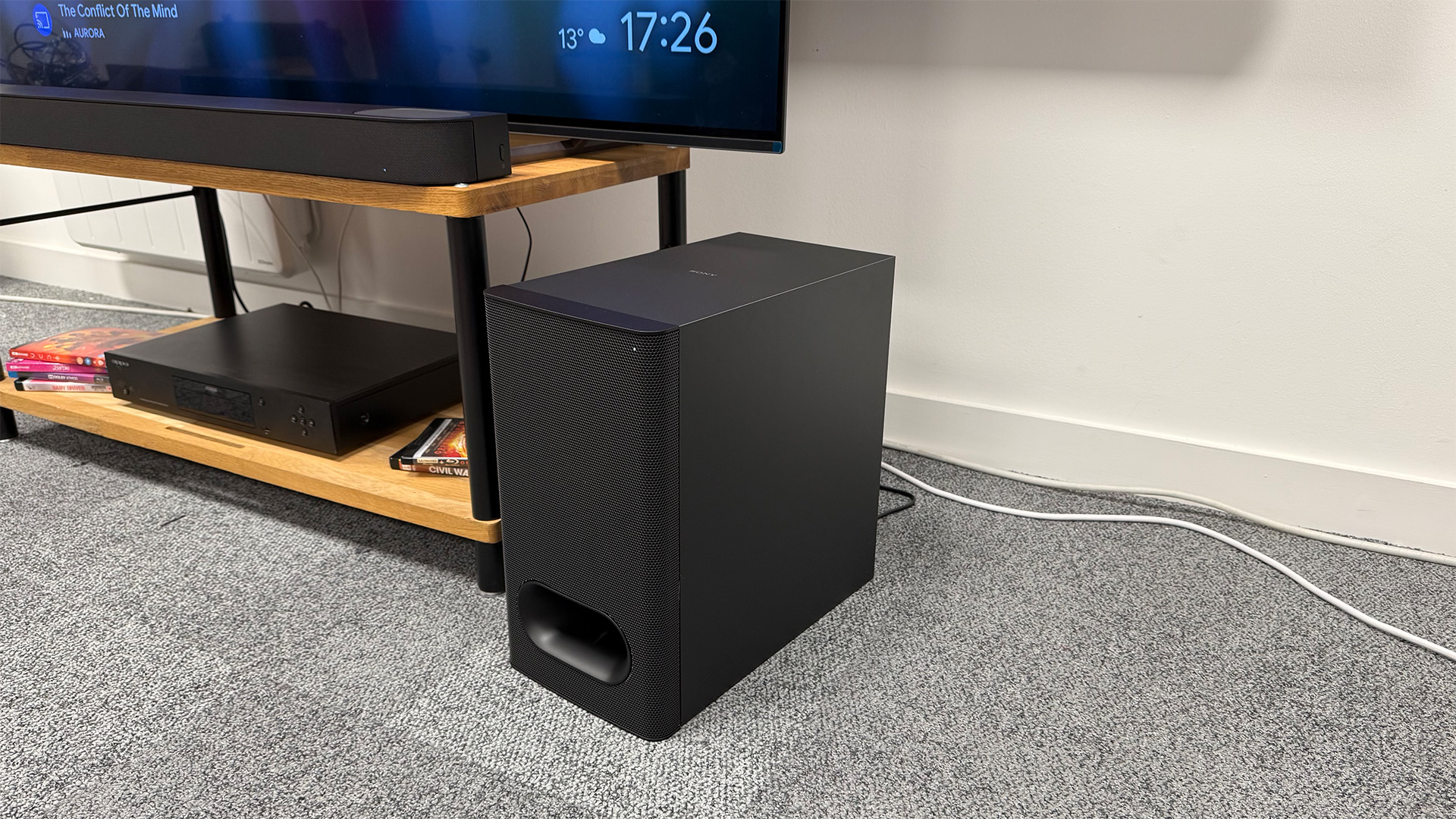
Thankfully, there is plenty on top of the big explosions that the Sony Bravia Theatre Bar 6 does well. Most notably, the scale, spaciousness and Atmos-ness of the delivery are exceptional for a soundbar system at this price.
The Bar 6 can fill a moderately sized living room in a way that the Sonos Beam can only dream of, and it can place effects directly above you. Frank Sinatra’s Summer Wind sounds as if it’s coming from a speaker right above your head when it plays in K’s apartment in Blade Runner 2049, and the rain in the rooftop scene fills the whole ceiling.
Admittedly, the individual raindrops aren’t audible in the way that they are from the very best soundbars, but the overall atmosphere is delivered very effectively.
Despite the generally big and bombastic approach, as long as you rein in the subwoofer as we have, dialogue is always clear, and while the Bar 6 doesn’t have the subtlety of the Beam, it does have enough ability with low-level dynamics to preserve the emotions in an actor’s delivery.
The only fly in the dialogue ointment is that voices can at times take on a slightly echoey, synthetic characteristic. This isn’t usually noticeable when other stuff is going on in the soundtrack, but it does stick out a bit during quieter moments.
You can solve the issue by turning the Sound Field setting off, but this downgrades a Dolby Atmos presentation to 7.1 or 5.1 and sacrifices all of the system’s trademark, room-filling scale. Still, this may be an option for content that’s more talkie than action-packed.
Back to the positives, and the attack on Washington at the end of Civil War is incredibly tense, atmospheric and exciting via the Theatre Bar 6. Bullets and tank shells fly across the room with abandon, and some effects, such as a jet flyby, genuinely sound as if they’re happening directly above you.
There’s good three-dimensional depth to the delivery, too, with elements sounding as if they’re moving away or towards you as they should.
However, while the Sonos Beam clearly can’t fill the room in the way that the Bar 6 can, or deliver the explosions with nearly the same weight or volume, it delivers effects with more detail and definition and it places them more precisely in the soundstage.
It’s got much crisper, more sparkly treble, too, so the smashing glass and ricocheting bullets all sound more exciting.
Given the pros and cons outlined with movies, it’s little wonder that the Bar 6 is a fair way behind the Beam when it comes to music.
You of course need to turn Sound Field off for stereo, but even so, we find that the vocals in Nothing But Thieves’ Graveyard Whistling sound a little lacking in warmth and roundedness. The bass is, predictably, a bit too much, too, with a slightly woolly delivery that distracts from everything else.
If you’re wondering whether you should just disable the subwoofer (or turn it right down) and let the soundbar handle music alone, the answer is no. The two components have clearly been designed to work together, and the soundbar on its own sounds lightweight and flat.
Verdict

The Sony Bravia Theatre Bar 6 is a very different proposition to the market-leading Beam, with delicacy and balance having been sacrificed somewhat in the name of scale and weight.
There’s a lot to be said for that, and the way the Bar 6 fills a room and delivers Dolby Atmos height effects is exceptional at this level. No similarly priced rival can deliver sofa-shaking explosions like this, either.
If that sounds like what you’re after from a soundbar and you don’t mind losing a fair amount of subtlety to get it, we have little doubt that the Theatre Bar 6 will be right up your street.
SCORES
- Sound 4
- Design 4
- Features 4
MORE:
Check out our Sonos Beam Gen 2 review
And our Sony Bravia Theatre Bar 8 review
And don't forget our Sony HT-S2000 review
Our pick of the best soundbars you can buy for every budget
Tom Parsons has been writing about TV, AV and hi-fi products (not to mention plenty of other 'gadgets' and even cars) for over 15 years. He began his career as What Hi-Fi?'s Staff Writer and is now the TV and AV Editor. In between, he worked as Reviews Editor and then Deputy Editor at Stuff, and over the years has had his work featured in publications such as T3, The Telegraph and Louder. He's also appeared on BBC News, BBC World Service, BBC Radio 4 and Sky Swipe. In his spare time Tom is a runner and gamer.
You must confirm your public display name before commenting
Please logout and then login again, you will then be prompted to enter your display name.
